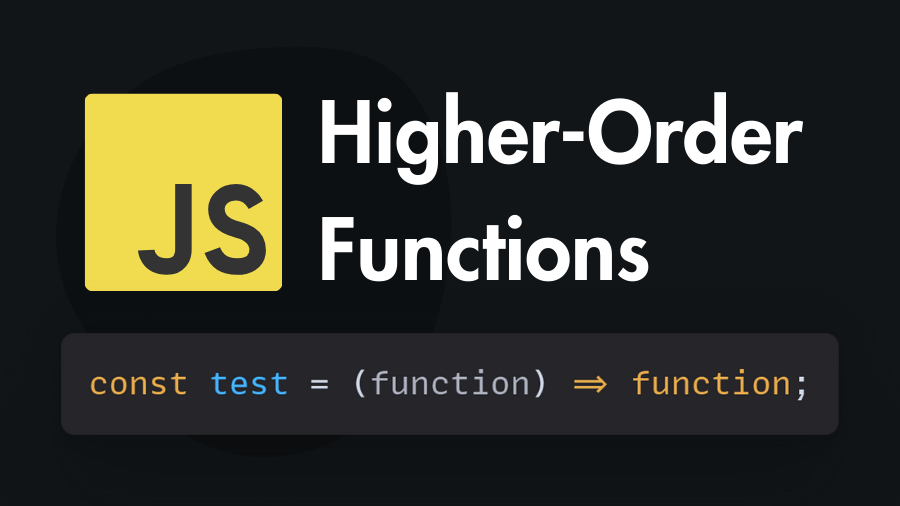JavaScript higher-order functions are a powerful and flexible concept that plays a crucial role in functional programming. They enable you to treat functions as first-class citizens, allowing you to pass functions as arguments to other functions, return functions from functions, and even store them in variables. In this tutorial you will learn what are higher-order functions, why they’re important, and how to use them effectively in your JavaScript code.
What Are Higher-Order Functions
In JavaScript, higher-order functions are functions that meet one or both of the following criteria:
- They take one or more functions as arguments.
- They return a function as a result.
So, higher-order functions are functions that can take other functions as arguments or return functions as their results.
Functions as Arguments:
You can pass functions as arguments to other functions. This allows for creating more flexible and reusable code.
function greet(name) {
return "Hello, " + name + "!";
}
function welcomeMessage(name, greetFunction) {
return greetFunction(name);
}
console.log(welcomeMessage("Alice", greet)); // Output: "Hello, Alice!"Functions as Return Values:
Functions can also be returned as the result of other functions. This is useful for creating factories or closures.
function multiplier(factor) {
return function(x) {
return x * factor;
};
}
const double = multiplier(2);
console.log(double(5)); // Output: 10Built-in Higher-Order Functions in JavaScript:
Many built-in methods in JavaScript take functions as arguments, making them higher-order functions. Examples include map(), filter(), reduce(), forEach(), etc., which are available on arrays.
Example using map():
The map() function applies a given function to each element of an array and returns a new array containing the results. It’s an excellent choice for transforming data.
const numbers = [1, 2, 3, 4, 5];
const doubled = numbers.map(function(x) {
return x * 2;
});
console.log(doubled); // Output: [2, 4, 6, 8, 10]Importance of Higher-Order Functions:
Higher-order functions provide several benefits to JavaScript developers:
- Abstraction: They allow you to abstract away common patterns and operations, reducing code duplication.
- Modularity: Higher-order functions promote modularity by encapsulating functionality in smaller, focused functions.
- Reusability: You can reuse higher-order functions with different callback functions, making your code more versatile.
- Functional Programming: Higher-order functions are a fundamental concept in functional programming, which encourages writing code that is easier to reason about and test.
Create Your Own Higher-Order Function in JavaScript:
You can create your own higher-order functions to encapsulate custom logic. Here’s an example of a simple higher-order function that applies a callback function to each element of an array:
function applyFunctionToArray(array, callback) {
const result = [];
for (const element of array) {
result.push(callback(element));
}
return result;
}
const numbers = [1, 2, 3, 4, 5];
// Apply the square function to each element of the numbers array using the applyFunctionToArray function.
const squared = applyFunctionToArray(numbers, function(num) {
return num ** 2;
});
console.log(squared); // [1, 4, 9, 16, 25]Higher-order Functions often Create Closures:
Higher-order functions often create closures, which means they capture the variables and scope of the outer function. This allows the inner function (the callback) to access the outer function’s variables even after the outer function has completed.
function outerFunction(x) {
return function innerFunction(y) {
return x + y;
};
}
const addFive = outerFunction(5);
console.log(addFive(10)); // 15Best Practices for using Higher-Order Functions in JavaScript
To make the most of higher-order functions, consider these best practices:
- Choose meaningful and self-explanatory names for your functions and variables.
- Document your code and describe the purpose of the higher-order functions and their callback functions.
- Break down complex tasks into smaller, reusable functions.
- Be mindful of performance when working with large datasets, as some higher-order functions may create unnecessary intermediate arrays.
